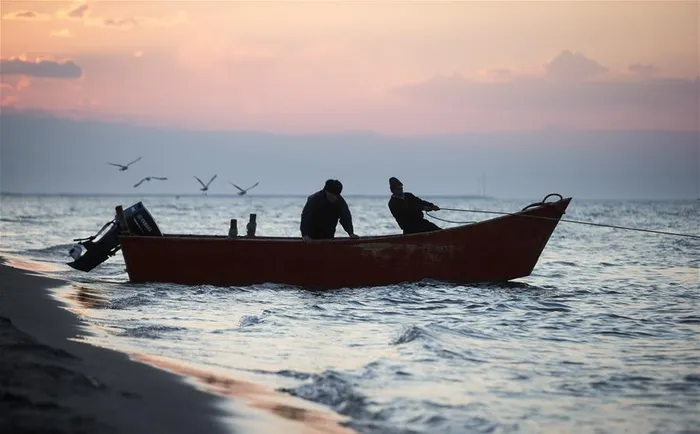BRICS+ Series: Iran’s Aquaculture Ambitions And The Opening for BRICS Development Finance

Iranian fishermen work at the Caspian sea beach near Anzali Port, northern Iran, on March 27, 2017.
Image: Xinhua
At the heart of this transformation is a push for self-sufficiency in aquaculture and marine biotechnology. The newly greenlit projects span a diverse range of priorities, from introducing novel aquatic species to expanding offshore cage farming capacity, a capital-intensive but high-impact strategy for food security and export potential.
Despite the scientific momentum, Iran faces a familiar challenge, a severe funding shortfall. The total projected cost of the active programmes exceeds 1.23 trillion rials (approximately $2.46 million), yet only a quarter of this has been secured. Among the initiatives, aquaculture alone requires 725 billion rials, while genetic conservation and wild fisheries management need 270 billion rials, and advanced processing technologies account for another 10 billion rials.
These figures may appear modest by global standards, but they carry outsized implications for regional food systems, climate resilience, and technology localisation, all areas where BRICS and the New Development Bank (NDB) are actively expanding their investment mandates.
An Entry Point for NDB to Fund Food Security Innovation
This funding gap provides an ideal entry point for BRICS+ strategic investment. The NDB, established to finance infrastructure and sustainable development in member countries, has recently widened its scope to include agriculture, health, and food systems, sectors that align perfectly with Iran’s fisheries transformation goals.
With Iran officially joining BRICS in 2024, the timing is pivotal. The country’s fisheries sector, with its long coastline and underutilised marine resources, holds untapped potential not just for domestic food security but for export-led growth to Asia and Africa — markets that BRICS states are increasingly prioritising.
Iran’s internal institutions have recognised the urgency of financial coordination. During a recent session of the Strategic Council for Fishery Research, a cross-institutional body formed in March 2023 — officials outlined the need for co-investment mechanisms between state-owned enterprises, banking institutions, and research bodies. Citing Article 4 of the national budget law, the council has called for 60% of public R&D funds to be directed toward fisheries and marine technology.
From Research Proposals to Regional Blue Economy Pipelines
What remains missing is multilateral, concessional capital that can fast-track these developments, protect ecosystems, and build regional supply chains. Here, the NDB could play a catalytic role by co-financing technology transfers, supporting infrastructure for offshore cage farming, and enabling capacity-building across Iran’s fisheries research ecosystem.
There’s precedent for this kind of BRICS support. The NDB has already funded water management systems in Brazil, agricultural resilience projects in South Africa, and digital supply chains in India. Expanding into sustainable aquaculture is not a departure, it’s an evolution of the bank’s mandate in the face of global food security pressures and the climate crisis.
A well-structured partnership could also create spillover effects for other BRICS+ members. Iran’s research institutions, spanning marine genetics, vaccine development, and biotech — are already collaborating under the Agricultural Research, Education, and Extension Organisation (AREEO). Linking these networks to BRICS’ wider knowledge-sharing platforms could generate scalable solutions for other nations dealing with overfishing, degraded coastlines, and dependence on foreign food imports.
Among the 345 proposals submitted to Iran’s Fisheries Research Institute, just 61 were selected as core missions, and only 17 have advanced to implementation — a clear indicator of how limited budgets are forcing hard choices, even when innovation potential is high.
Written By:
*Dr Iqbal Survé
Past chairman of the BRICS Business Council and co-chairman of the BRICS Media Forum and the BRNN
*Chloe Maluleke
Associate at BRICS+ Consulting Group
Russia & Middle Eastern Specialist
* MORE ARTICLES ON OUR WEBSITE https://bricscg.com/
** Follow @brics_daily on X/Twitter & @brics_daily on Instagram for daily BRICS+ updates